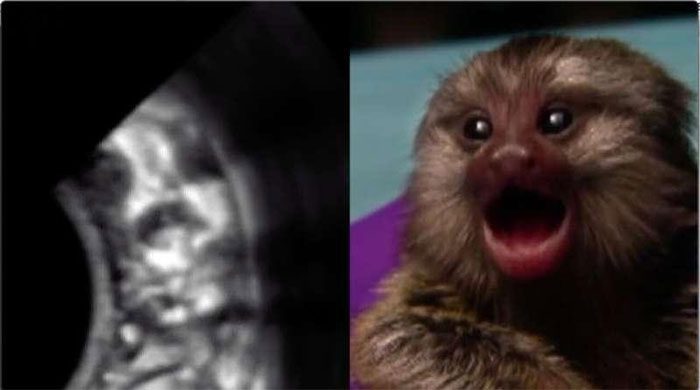A study published in eLife reveals that squirrel monkeys begin to practice facial and mouth movements to call for help even before they are born.
This finding may also apply to humans. Ultrasound images taken during the last trimester of pregnancy show that fetuses in the womb exhibit movements similar to crying.
The first cries of humans and other primates are crucial for survival. These calls allow squirrel monkeys to summon family members for assistance. This form of interaction also lays the groundwork for more complex communication later in the lives of squirrel monkeys.

In the study, squirrel monkeys were ultrasounded 14 – 17 times.
The lead author, Darshana Narayanan, who conducted the research at the Department of Psychology and the Princeton Neuroscience Institute at Princeton University, New Jersey, USA, stated: “We wanted to understand how the first sounds of newborns develop.”
Narayanan and colleagues performed ultrasounds 2 to 3 times a week on four pregnant squirrel monkeys. Each monkey underwent a total of 14 to 17 ultrasounds, starting from the first appearance of the fetus on ultrasound until the day before they were born.
The research team tracked the head, face, and mouth movements of the developing squirrel monkeys. They then compared these movements with the calls of the newborn squirrel monkeys.
Using frame-by-frame analysis, the researchers found that initially, the head and mouth movements of the fetus coordinated with each other. However, the mouth movements became distinct over time. Additionally, the study results indicated that the crying movements before and after birth in squirrel monkeys differ significantly from licking or twisting movements.
“Our experiments show that squirrel monkeys begin to practice movements necessary for important social interactions before they can produce sounds,” researcher Narayanan explained.
According to this expert, further research into these movements in squirrel monkeys could help scientists gain insights into vocal development in other primate species, including humans.
Co-author Asif Ghazanfar, a professor at the Princeton Neuroscience Institute at Princeton University, concluded: “Squirrel monkeys provide a unique opportunity to study vocal development in primates. Like humans, squirrel monkeys are very active. They learn to communicate through interactions with their parents.”





















































